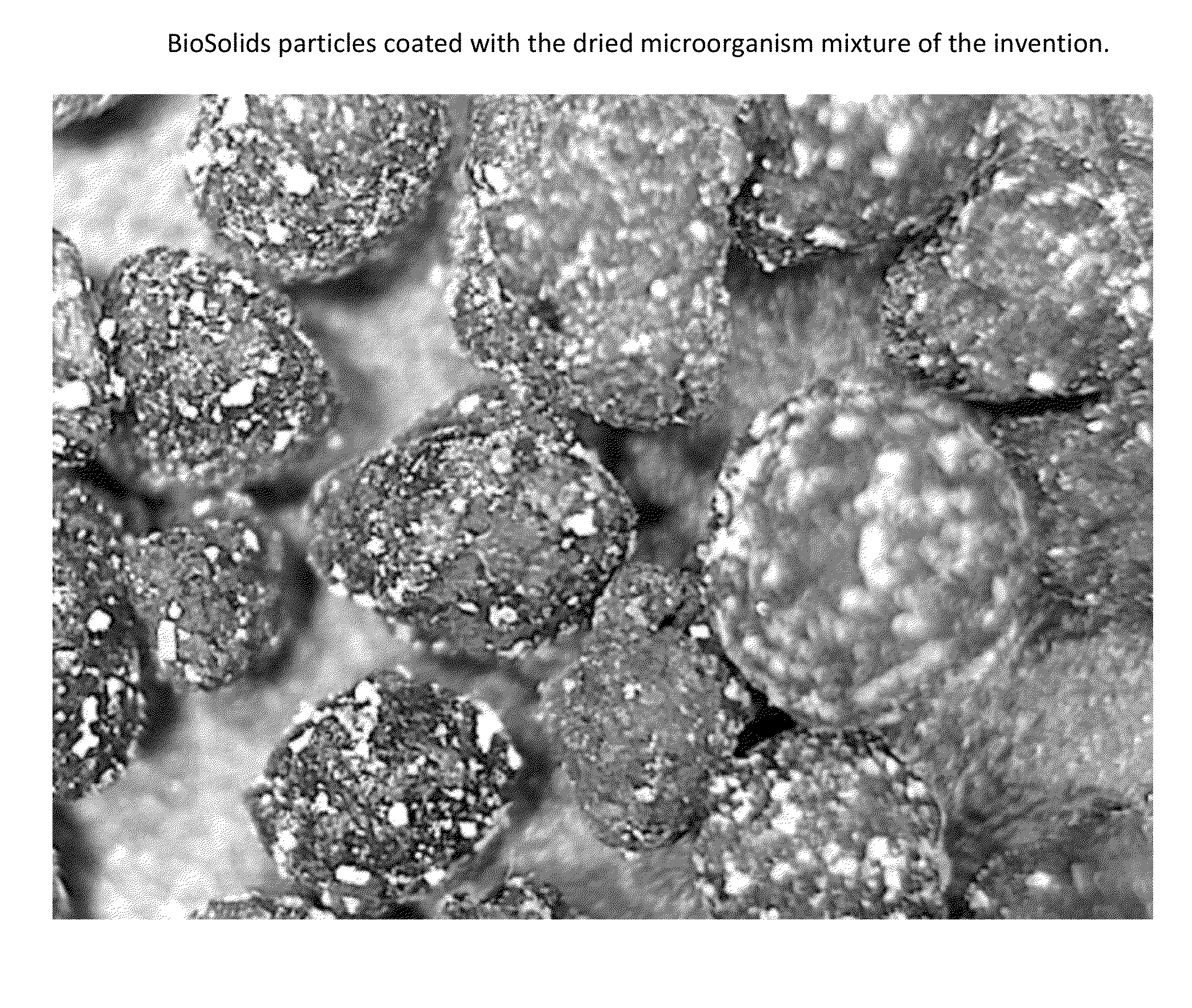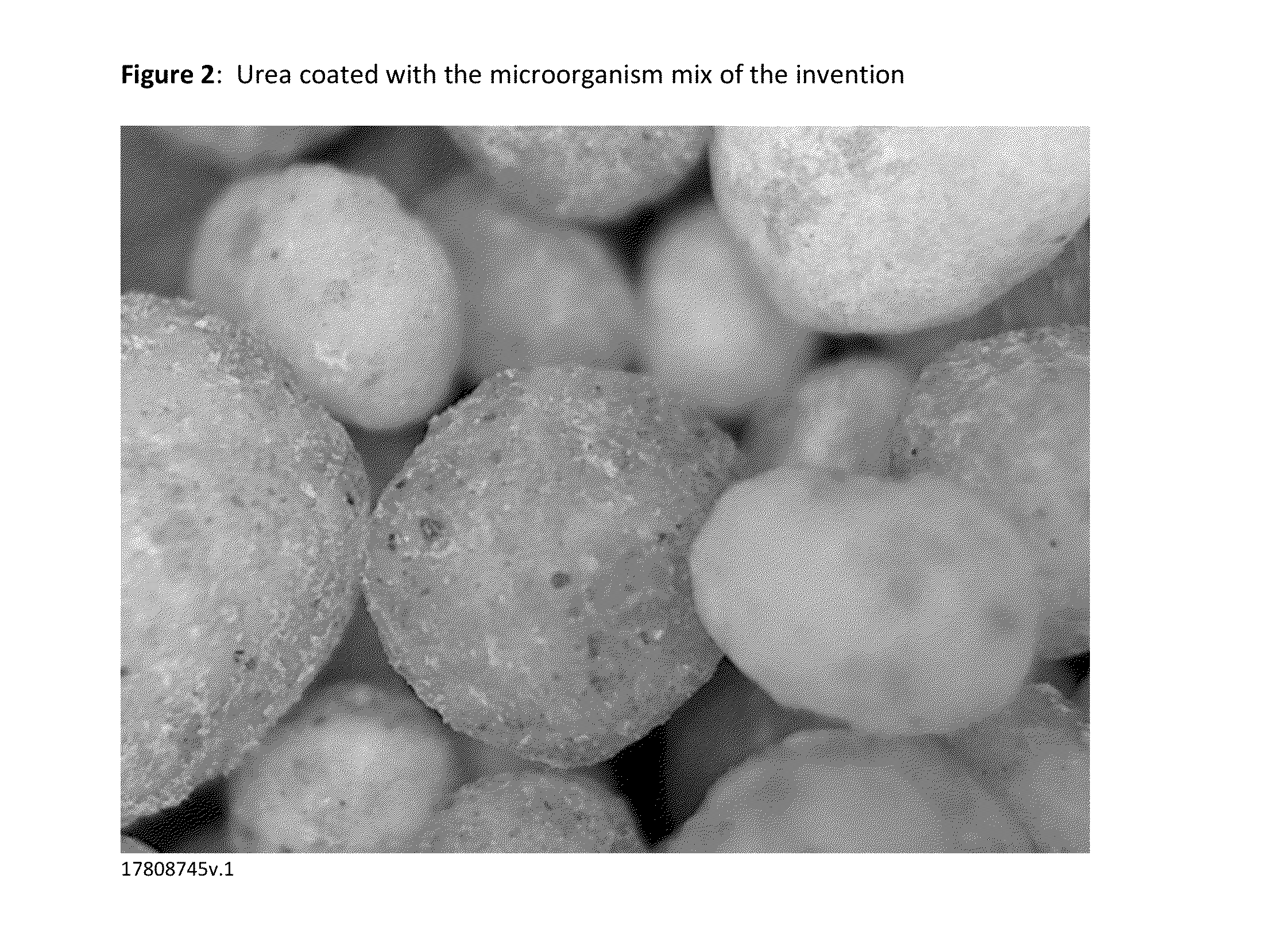Fertilizer compositions methods of making and using same
a fertilizer composition and composition technology, applied in the field of microorganisms, can solve the problems of reducing customer adaptation and dosage compliance, increasing complexity and cost for end users, and compromising the health and vigor of plants
- Summary
- Abstract
- Description
- Claims
- Application Information
AI Technical Summary
Benefits of technology
Problems solved by technology
Method used
Image
Examples
example 1
Preparation of the Liquid Microbial Species
[0052]The microbes of the present invention can be grown using standard submerged liquid fermentation processes known in the art.
[0053]Individual starter cultures of Bacillus subtilis, Bacillus racemilacticus, Bacillus licheniformis, Bacillus amyloliquefaciens, Bacillus cereus, Bacillus pumilus, Pseudomonas putida, Streptoverticillium griseocarnium, and Streptomyces griseoveridis were grown according to the following general protocol and adapted as required for each separate organism: 2 grams Nutrient Broth, 2 grams AmberFerm (yeast extract) and 4 grams Maltodextrin were added to a 250 ml Erlenmeyer flask. 100 mls distilled, deionized water were added and the flask stirred until all dry ingredients dissolved. The flask was covered and placed for 30 min in an Autoclave operating at 121° C. and 15 psi. After cooling, the flask was inoculated with 1 ml of one of the pure microbial strains. The flask was sealed and placed on an orbital shaker a...
example 2
Preparation of the Dried Microbial Species
[0057]The mixed liquid microbial composition from Example 1 was filtered, centrifuged then vacuum dried until moisture dropped below 5%. The resulting dried microbial product was ground to an average particle size of 100 microns. The final microbial activity of the dried, ground product was 109-1010 CFU / g.
[0058]In an alternative procedure the individual liquid fermentations from Example 1 were each filtered, centrifuged and vacuum dried until moisture dropped below 5%. The resulting dried microbial products were then ground to an average particle size of 100 microns. After grinding the individual dried microbial products were combined in equal proportion to give a final mixed microbial composition with activity between 109 and 1010 CFU / g.
example 3
Formulation of Coated Particles Using the Liquid Microbial Product from Example 1
[0059]a. BioSolids
[0060]Filler particles used by the fertilizer industry (designated 4-4-0-2Fe and referred to as Nutri-Pel® Bio-solid) are used as carrier particles. 500 pounds of Nutri-Pel® particles are loaded into a Continental Rollo-Mixer MK IX, Model No. 31-15 / 90s (Continental Products Corporation) operating at 90 hertz. 2.75 pounds of the mixed microbial liquid composition from Example 1 are sprayed onto the Nutri-Pel® bed with mixing. After spraying, the particles are allowed to mix until dry to the touch. Microbial activity, determined by dosing a sample of the coated particle into buffer followed by serial dilution and plating, shows activity of 109 CFU / g.
[0061]b. Urea
[0062]500 pounds of Urea (46-0-0 from Prairie Creek Terminal Service, Elwood, Ill.) are loaded into a Continental Rollo-Mixer MK IX, Model No. 31-15 / 90s (Continental Products Corporation) operating at 90 hertz. 1.5 lbs of the mix...
PUM
| Property | Measurement | Unit |
|---|---|---|
| mean particle size | aaaaa | aaaaa |
| mean particle size | aaaaa | aaaaa |
| wt. % | aaaaa | aaaaa |
Abstract
Description
Claims
Application Information
 Login to View More
Login to View More - R&D
- Intellectual Property
- Life Sciences
- Materials
- Tech Scout
- Unparalleled Data Quality
- Higher Quality Content
- 60% Fewer Hallucinations
Browse by: Latest US Patents, China's latest patents, Technical Efficacy Thesaurus, Application Domain, Technology Topic, Popular Technical Reports.
© 2025 PatSnap. All rights reserved.Legal|Privacy policy|Modern Slavery Act Transparency Statement|Sitemap|About US| Contact US: help@patsnap.com



